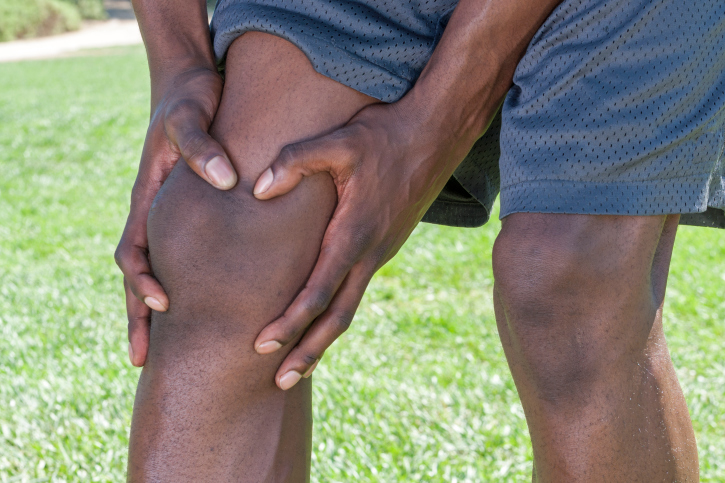 Arthritis is a general term that means inflammation in a joint. Joint inflammation is characterized by redness, warmth, swelling, and pain within the joint.
Arthritis is a general term that means inflammation in a joint. Joint inflammation is characterized by redness, warmth, swelling, and pain within the joint.
Rheumatoid arthritis is a type of chronic arthritis that typically occurs in joints on both sides of the body (such as hands, wrists, or knees). This symmetry helps distinguish rheumatoid arthritis from other types of arthritis.
In addition to affecting the joints, rheumatoid arthritis may occasionally affect the skin, eyes, lungs, heart, blood, or nerves.
What Are the Symptoms of Rheumatoid Arthritis?
Symptoms of rheumatoid arthritis include:
- Joint pain and swelling
- Stiffness, especially in the morning or after sitting for long periods
- Fatigue
Rheumatoid arthritis affects everyone differently. For some, joint,symptoms develop gradually over several years. In others, rheumatoid arthritis may progress rapidly and while other people may have rheumatoid arthritis for a limited period of time and then enter a period of remission.
Who Gets Rheumatoid Arthritis?
Rheumatoid arthritis affects about 1% of the U.S. population. While it is two to three times more common in women than in men, men tend to be more severely affected when they get it. It usually occurs in middle age, however, young children and the elderly also can develop rheumatoid arthritis.
What Causes Rheumatoid Arthritis?
The exact cause of rheumatoid arthritis is unknown, but it is thought to be due to a combination of genetic, environmental, and hormonal factors. With rheumatoid arthritis, something seems to trigger the immune system to attack the joints and sometimes other organs. Some theories suggest that a virus or bacteria may alter the immune system, causing it to attack the joints. Other theories suggest that smoking may lead to the development of rheumatoid arthritis.
Research hasn't completely determined exactly what role genetics plays in rheumatoid arthritis. However, some people do seem to have a genetic or inherited factor that increases their chance of developing rheumatoid arthritis.
How Does Rheumatoid Arthritis Affect the Body?
Once the immune system is triggered, immune cells migrate from the blood into the joints and joint-lining tissue, called synovium. There the immune cells produce inflammatory substances. The increased number of cells and inflammatory substances within the joint cause irritation, wearing down of cartilage (cushioning material at the end of bones), and swelling and inflammation of the joint lining. Inflammation of the joint lining stimulates it to produce excessive joint fluid within the joint.
As the cartilage wears down, the space between the bones narrows. If the condition worsens, the bones could rub against each other.
As the joint lining expands, it may invade into, or erode, the adjacent bone, resulting in bone damage that is referred to as erosions. All of these factors cause the joint to become very painful, swollen, and warm to the touch.
How Is Rheumatoid Arthritis Diagnosed?
The diagnosis of rheumatoid arthritis is based on a combination of factors, including:
- The specific location and symmetry of painful joints, especially the hand joints.
- The presence of joint stiffness in the morning.
- Presence of bumps and nodules under the skin (rheumatoid nodules).
- Results of X-ray tests that suggest rheumatoid arthritis.
- Positive results of a blood test called the rheumatoid factor.
Most, but not all, people with rheumatoid arthritis have the rheumatoid-factor antibody in their blood. (Rheumatoid factors are actually antibodies that bind other antibodies.) Rheumatoid factor may sometimes be present in people who do not have rheumatoid arthritis. Other diseases can also cause the rheumatoid factor to be produced in the blood. Therefore, the diagnosis of rheumatoid arthritis is based on a combination of joint abnormalities as well as laboratory information and not just the presence of the rheumatoid factor in the blood.
A newer, more specific blood test for rheumatoid arthritis is the cylic citrulline antibody test, also called anti-CCP. When positive, it is highly suggestive of rheumatoid arthritis. The presence of anti-CCP antibodies implies a tendency toward a more aggressive form of rheumatoid arthritis.
People with rheumatoid arthritis may have a mild anemia. Blood tests may also reveal an elevated erythrocyte sedimentation rate (ESR) or elevated C-reactive protein (CRP) levels, which are markers of inflammation.
Some people with rheumatoid arthritis may also have a positive antinuclear antibody test (ANA). This test is indicative of the fact that rheumatoid arthritis is an autoimmune disease and sometimes overlaps with other autoimmune disorders.
How Is Rheumatoid Arthritis Treated?
There are many different ways to treat rheumatoid arthritis. Treatments include medications, rest and exercise, and surgery to correct damage to the joint.
The type of treatment will depend on several factors including the person's age, overall health, medical history, and severity of the arthritis.
Rheumatoid Arthritis Medications
There are many rheumatoid arthritis medications available to decrease joint pain, swelling, and inflammation. Some of these drugs prevent or minimize the progression of the disease.
Drugs that offer relief of arthritis symptoms (joint pain, stiffness, and swelling) include:
- Anti-inflammatory painkiller drugs, such as aspirin, ibuprofen, or naproxen
- Topical (applied directly to the skin) pain relievers
- Corticosteroids, such as prednisone
- Narcotic pain relievers
There are also many strong medications called disease-modifying antirheumatic drugs (DMARDs) that are used to treat rheumatoid arthritis. These medicines usually work by interfering with or suppressing the immune system's attack on the joints. They include:
- Plaquenil (originally used to treat malaria)
- Immune suppression drugs such as methotrexate, Imuran, and Cytoxan
- Biologic treatments, such as Enbrel, Humira, Remicade, Orencia, and Rituxan
- Other drugs, such as Azulfidine and Arava
Why Is Rest and Exercise Important for Rheumatoid Arthritis?
A balance of rest and exercise is important in treating rheumatoid arthritis. During flare-ups (worsening of joint inflammation), it is best to rest the joints that are inflamed. This may be accomplished by the temporary use of a cane or joint splints.
When joint inflammation is decreased, guided exercise programs are necessary to maintain flexibility of the joints and to strengthen the muscles that surround the joints. Range-of-motion exercises should be done regularly to maintain joint mobility.
When Is Surgery Necessary for Rheumatoid Arthritis?
When joint damage from the rheumatoid arthritis has become severe or pain is not controlled with drugs, surgery may be an option to help restore function to a damaged joint.
Can Rheumatoid Arthritis Be Cured?
Although there is not yet a cure for rheumatoid arthritis, early, aggressive treatment has been shown to help prevent disability.








